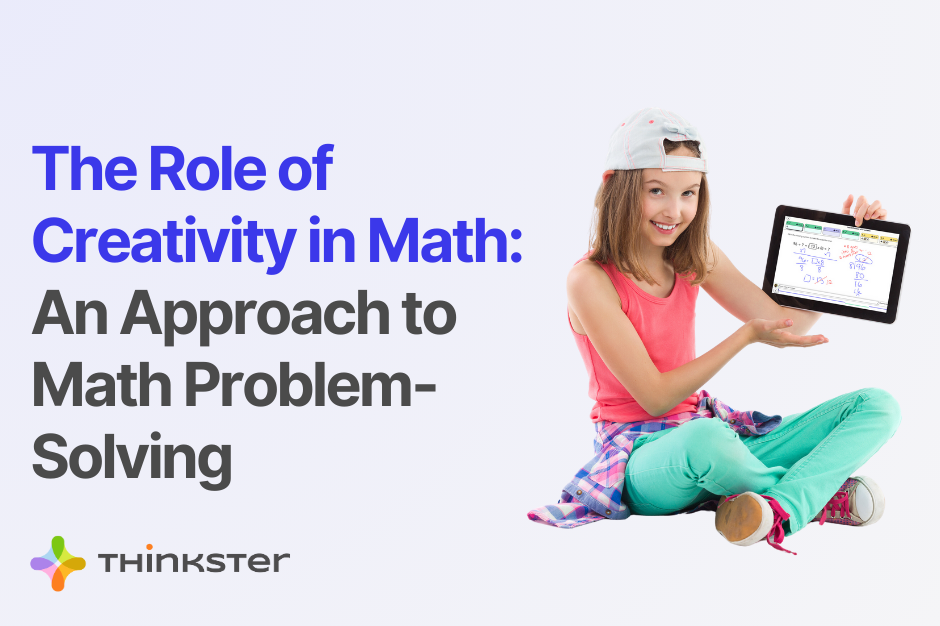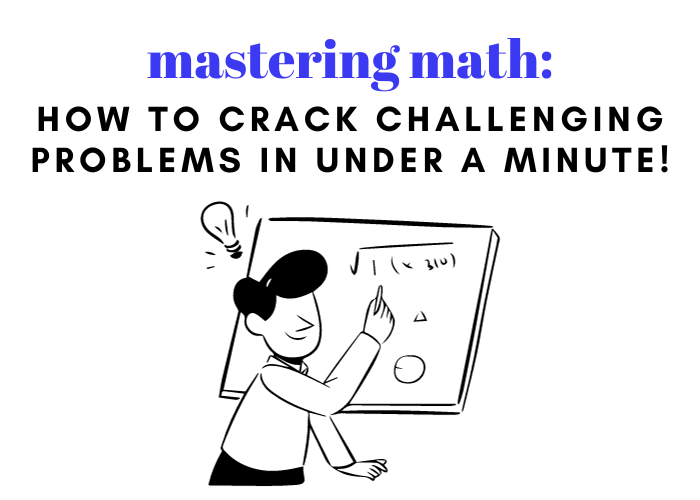

Last Updated on May 25, 2022 by Thinkster
Sometimes there’s no greater pain for students than coming across a dreaded math word problem.
When these questions show up on homework, math worksheets, pop quizzes, and tests, they give even the most confident students reason to pause and sit up a little straighter.
That’s because these problems take math understanding to the next level. They require children to use their reading and comprehension skills while also applying everything they’ve learned in math class.
Some students approach word problems like they’re solving a riddle, others tend to freeze and forget basic math concepts they normally understand.
Mastering the art of solving math word problems takes practice. It doesn’t normally “just come” to your child.
But there are 5 huge benefits to your child becoming a great math word problem solver — and you won’t want your child missing out on any of them.
They’re more than just a different type of question to break up the monotony of multiple choice tests.
Solving math word problems teaches your child:
1. How Math Applies in the Real World
“Why do I need to learn this stuff anyway?”
Maybe you can remember saying this phrase to your parents, or maybe it’s the first time you’re hearing it from your child, but this familiar question gets asked a lot when students are frustrated with math.
Math often seems disconnected from day-to-day life and, as the problems get harder, students have more trouble figuring out why they need to learn these concepts if they’ll never “use” them.
After all, it’s not often your child sees you working out complicated math equations in your free time.
Math word problems solve this.
They show students how math concepts apply to real-world situations.
For example, students will come across problems asking them to measure objects for a hypothetical construction project or requiring them to plan enough treats for a party.
These real-world applications show students not only why they’ll need the concepts being taught in math class, but also how to solve the real-world problems they encounter using math they already know.
Connecting the dots between math class and everyday life is what will reinforce concepts outside of the classroom. Eventually, these basic math concepts will become second nature.
And it will also help them develop their critical thinking skills.
2. How to Develop Higher Order Thinking and Critical Thinking Skills
Multiple choice math answers can be determined using a bit of logic and process of elimination.
But word problems require more than simply looking at a math problem and figuring out the solution based on similar equations your child has solved before.
To conquer a word problem, students must be able to read the problem, pull out the pertinent information, solve the math equation and then think about how the answer makes sense in the context of the problem.
Many students get stuck because they have an idea of why they need to perform certain steps to get an answer, but they lack a true understanding of the concepts necessary for solving them in all forms – like word problems.
Word problems can be confusing because, unlike equations, they contain extra words, numbers, and descriptions that have seemingly no relevance to the question.
If your child has trouble focusing, dissecting all this could definitely confuse them.
Check out this word problem to see what we mean:
Patrick read 21 books last summer. Each book had 2,000 words in it. Patrick bought 5 of those books for $2.50 each. How many words did Patrick read last summer?
The question asks how many words Patrick read. This has nothing to do with how much Patrick paid for the books he read. Understanding that the price can be eliminated by solving the problem here requires critical thinking.
This is what helps students make smarter decisions. Since they’ll actually understand difficult concepts better, they’ll also be faster, more confident test-takers.
3. How to Apply Different Math Concepts Simultaneously
Math word problems often require using different concepts in one question.
Students will commonly need to use their basic number sense, algebra skills, and geometry expertise to come up with a single answer for a problem. And let’s not forget that your child will also need solid reading comprehension skills.
Students practicing word problems will begin to develop an understanding of how to pull apart a problem and separate it into important sections. This will then give them the opportunity to solve each section with the appropriate math concept.
For example:
Samantha wants to throw a birthday party. The pizza place she chooses has tables that seat 12 people each. She wants 9 of her friends to sit at each table. The rest of the table will be for adults. If she invites 72 friends, how many guests can fit altogether?
Students will need to process each part separately and then decide a method for solving it step-by-step.
Here’s how many different math concepts children will need to solve this particular one:
That’s four foundational math concepts rolled into one comprehensive question!
4. How Math Can Be Creative
Most children don’t associate the word “creative” with math class.
That’s because normal problems like 3+2 don’t require much high-level thinking. At some point, your child will intuitively know that adding those two numbers equals 5.
Word problems are different, though, because each one needs to be analyzed and evaluated. For challenging math problems, a student may need to approach the problem in a new way.
He or she will need to think visually and proceed logically in order to find the solution. They’ll need to create their own math problem and then solve it, since the equation isn’t laid out in front of them.
When our dedicated math tutors watch your child think through problems like this, that is how they discover whether or not a child has true mastery of the math they’re learning.
5. How Teachers Evaluate a Student’s Understanding
Solving math word problems can be difficult for students – especially for those who are already struggling with foundational math concepts.
Since there are no set rules for solving them, students lacking confidence in their math abilities may feel unequipped to tackle a word problem on their own.
If a student hasn’t totally grasped the lesson of the day, they may not know where or how to get started.
So when a student becomes a math word problem solver, teachers and tutors know that he or she has reached the right level of understanding. They have demonstrated an ability to apply math concepts to handle difficult problems in the real world.
Word problems are an important assessment tool for teachers because they show a complete understanding of the math being taught.
And they also show parents and teachers where kids are struggling to connect.
So how can you give your child the math help they need when you don’t have time?
Even kids who ace their math tests struggle with word problems from time to time.
So, if your child looks at math word problems more like a waking nightmare than a fun challenge, you may want to check out the signs it’s time to hire an online math tutor and help them get back on track.
Thinkster is an online math tutor app that uses AI technology and instruction at the point of learning to help your child practice math word problems and level up their critical thinking skills.
Check out how Thinkster works or enroll your student today and start for free now!



